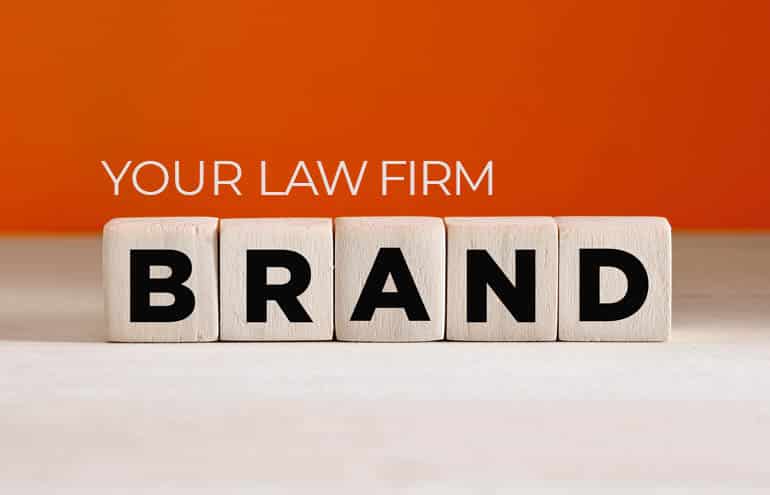Branding is more than just your logo and the colors you use in your website design — it touches on just about every aspect of your law firm’s identity. Branding can help you tell a story to your clients.

Table of contents
Branding is everything your clients will experience about your firm, and while that does include the logo and color schemes, it also extends to your copywriting, messaging, and the experiences your clients have with your attorneys, legal team and staff. Together, these elements form a narrative that establishes who you are as a firm, your mission, your capabilities and how you serve your clients.
How Law Firm Website Branding Creates a Story
Here’s a quick look at some specific elements of branding that help create a story on your website.
1. Your Law Firm’s Logo
A well-designed logo can tell potential clients a lot about your firm. Your logo should speak to your target audience. The colors, fonts and designs you choose will help you communicate the character of your brand. Most law firms want to come across as professional and authoritative. But your logo should speak to more than just your professionalism — it should also speak to how you provide your service. Are you an assertive, aggressive litigator or a calm and caring estate planner? The traits of your firm and how you serve your clients should be reflected in the logo.
2. Your Color Scheme
Color also plays a significant role in evoking emotion. Color psychology research tells us, for example, that blue represents security, strength, wisdom and trust, while black represents luxury and power, and red represents passion and boldness. The colors you select will help reinforce your firm’s personality and character.
3. Images
The images on your website play a major role in telling a story to your visitors. Generic stock photos may be cheap (or even free), but you’ll have a hard time getting them to fit your brand because they’re just that: generic. Original photography and custom images will better fit the narrative you’re trying to create and will better complement your copy and other design elements.
4. Writing Style
The tone you use in the copy for your website — formal, friendly, professional, casual — will do more to help you establish a stronger and more detailed brand identity than design and imagery. The words you choose to tell your story will also help you better engage your target audience. This is true for all of your website pages, especially lawyer bios.
5. Interactions
Every single point of contact on your website is an opportunity for you to reinforce your brand. This includes intake forms, chatbots, and all other prompts or touchpoints. The language in your forms and questionnaires should align with the tone you use on your website. For example, if you are a corporate law firm with a carefully cultivated professional reputation and represent multimillion-dollar companies, you should not be using casual or silly language in your chatbot.
Working together, these key website elements can help you build a brand identity and narrative that will captivate your target audience and help you form stronger connections with would-be clients.

Don’t miss out on our daily practice management tips. Subscribe to Attorney at Work’s free newsletter here >






















